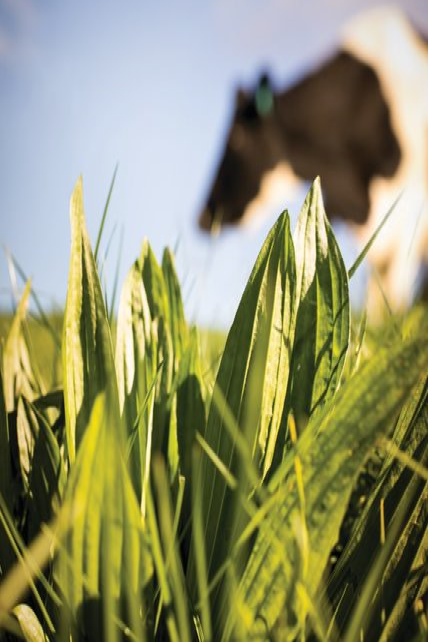Intellectual property, and innovation, come in many forms. New and distinctive plant varieties might not be the best known of these, or the most glamourous, but they may well come to play an increasingly important role in our climate-challenged world of today.
Plant Variety Rights (PVR) have protected breeders in New Zealand since 1975, and this month New Zealand celebrates 41 years as a member of the International Union for the Protection of New Varieties of Plants (UPOV).
PVR give a breeder the exclusive right to produce for sale, or sell propagating material of, a plant variety – or licence others to do the same.
Membership of UPOV entitles local breeders to apply for plant variety rights in 78 other member states, under the same provisions as the breeders in those states. It gives access to bigger markets, encourages investment and development in local plant breeding, provides local growers and farmers access to new varieties, and allows for information and expertise to be shared globally.
On the international stage, New Zealand punches above its weight in plant breeding, with applications for pasture and forage species being at the forefront, explains PVR examiner Jacquie Broadhead.
“Despite New Zealand being a small country, pastoral agriculture plays a large part of our economy. That means a lot of effort is put into agriculture and plant breeding,” says Jacquie.
PVR can be applied for varieties in any plant species, often for fruit, vegetables, and ornamental plants, but it doesn’t stop there. In fact, the plant species currently generating the most interest in the fight against climate change in NZ is a humble ‘weed’, or more correctly, a plantain (Plantago lanceolata).
Tackling global warming from the ground up
Developed by Agricom, the Ecotain® environmental plantain brand is used to market a mix of the formerly protected variety 'Ceres Tonic' and the protected variety 'Agritonic', granted PVR in 2017. The varieties have been extensively studied and shown to have a significant impact in reducing nitrogen leaching in dairy farms. The varieties are claimed to be easy to establish, highly palatable to livestock, have a high mineral content fit well into a pasture grazing rotation.
Nitrogen leaching, and the negative effects it has on the environment, are well known. Local breeders began looking at plantain for its potential environmental benefits 20 years ago. New Zealand has developed its own national distinct, uniform and stable (DUS) test guidelines for plantain, as there is no UPOV test guideline to follow.

Agricom's Ecotain® (Credit: Agricom)
Interestingly, plantain itself was historically viewed as a ‘weed’. Agricom’s Dr Glenn Judson, who was instrumental in the development of Ecotain®, says this shows that some plants we have previously considered to be weeds may well provide solutions to some of our most pressing problems, such as dealing with climate change.
Having a PVR grant for 'Agritonic' not only brings a level of credibility to the product, but also ensures we can receive a return on the investment made in the plant breeding and research and allow future investment he says.
A potential further benefit of varieties used in Ecotain® currently being studied, is the reduction in nitrous oxide and methane emissions produced from dairy farming. Nitrous oxide (emitted from urine patch) and methane (produced through cow emissions of digestion) are two of the core gases contributing to global warming. The majority of methane and nitrous oxide emissions in New Zealand are produced in dairy and beef farming.
“Once the varieties in Ecotain® are recognised as a mitigation option, plantain could become quite mainstream. It is proving to have multiple benefits beyond its environmental impact,” says Glenn
Looking to the future
As our climate becomes hotter and more unpredictable, nature-based problem-solving is coming increasingly to the fore. Breeding for climate-change is likely to play an important part in our fight against global warming, both in NZ and around the world.
To help with this, and to meet New Zealand’s target of net zero greenhouse gas emissions by 2050, we are likely to see more plant varieties being developed to combat climate change in the coming years.
How do PVRs work in New Zealand?
In New Zealand, PVRs are presently available for varieties of any kind of plant, excluding algae or bacteria. Rights holders commonly collect royalties from the commercialisation of their protected varieties, with the PVR applying for a term of 20 years in the case of non-woody plants, or 23 years in the case of woody plants.
In New Zealand, all plants must undergo a period of testing and evaluation before they are granted PVR. This can be in a centralised trial – the general practice for potatoes, grasses, roses, apples and some ornamentals – or on the applicant’s own property. The trials seek to establish that the plant is indeed morphologically or physiologically distinct, uniform and stable (DUS).
New Zealand is unique on the international stage in that DUS testing of varieties is carried out using five different testing arrangements, dependent on the plant species. This is a combination of centralised trials run by the PVR office, evaluation on applicant’s properties, breeder testing and use of foreign test reports.
